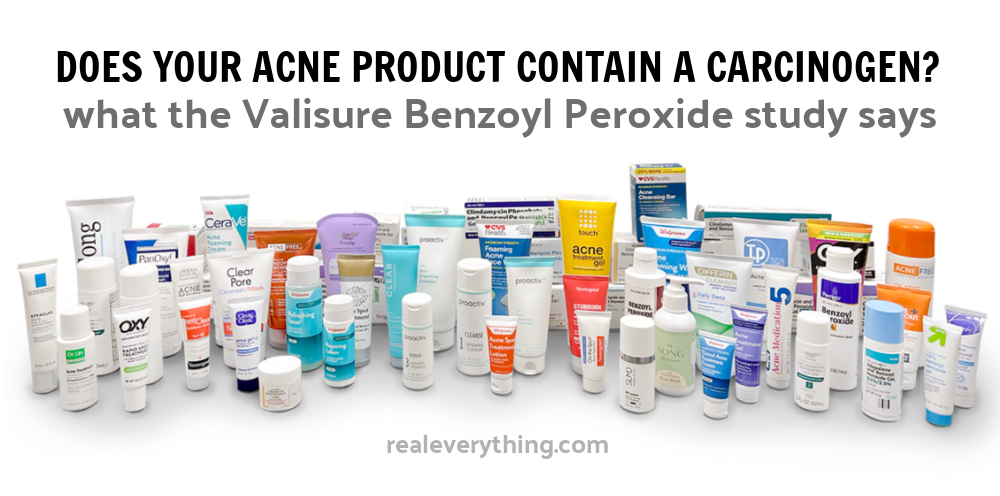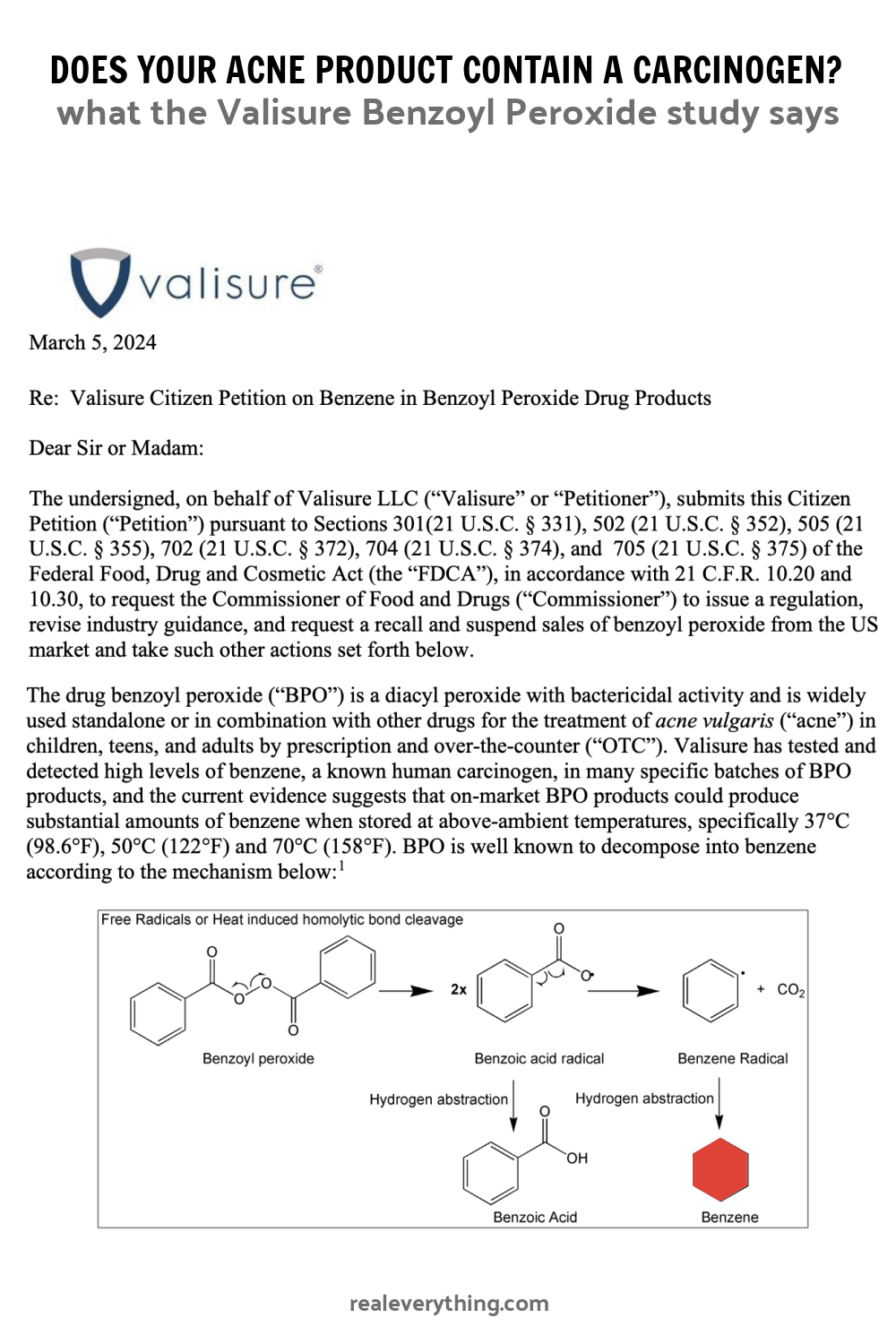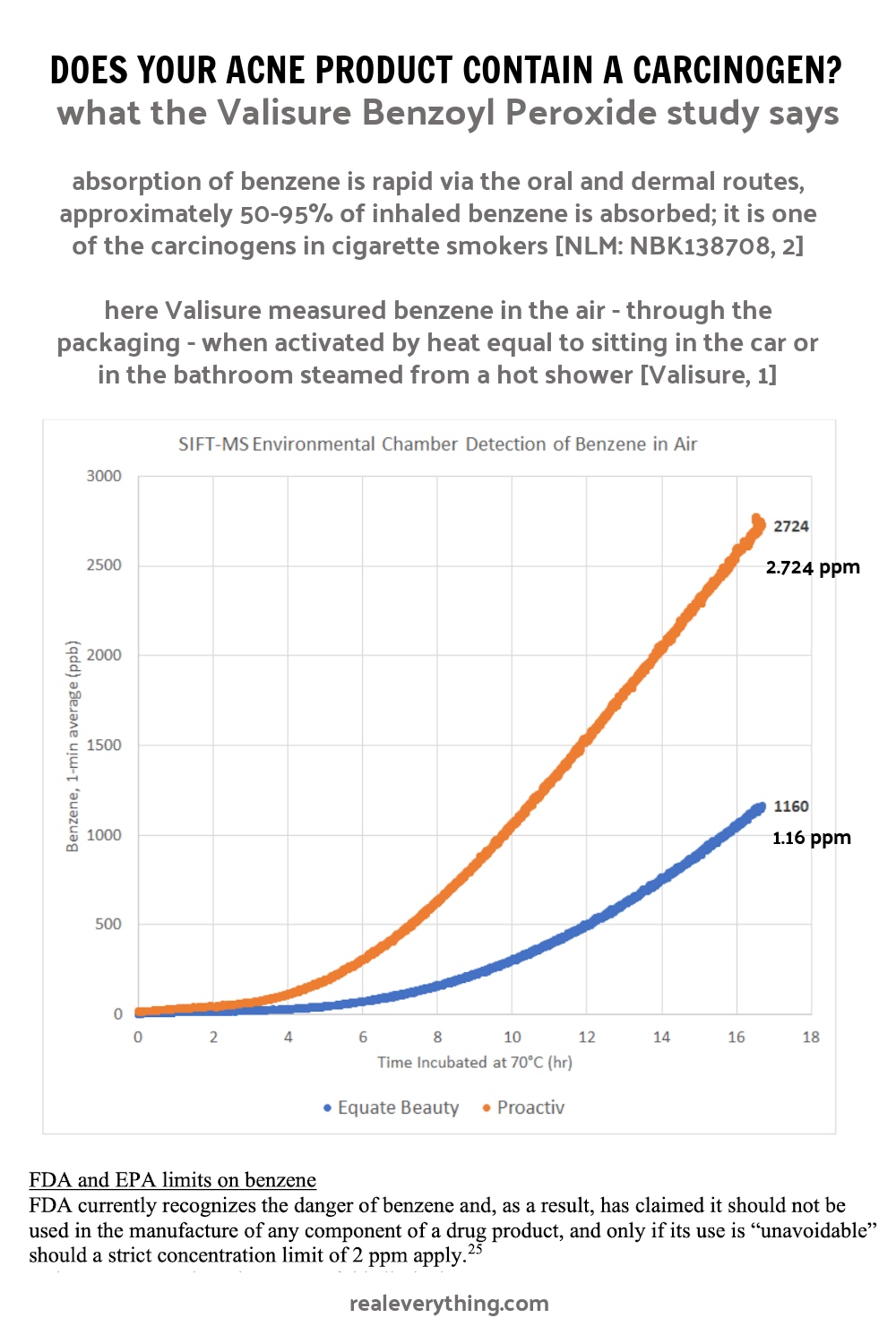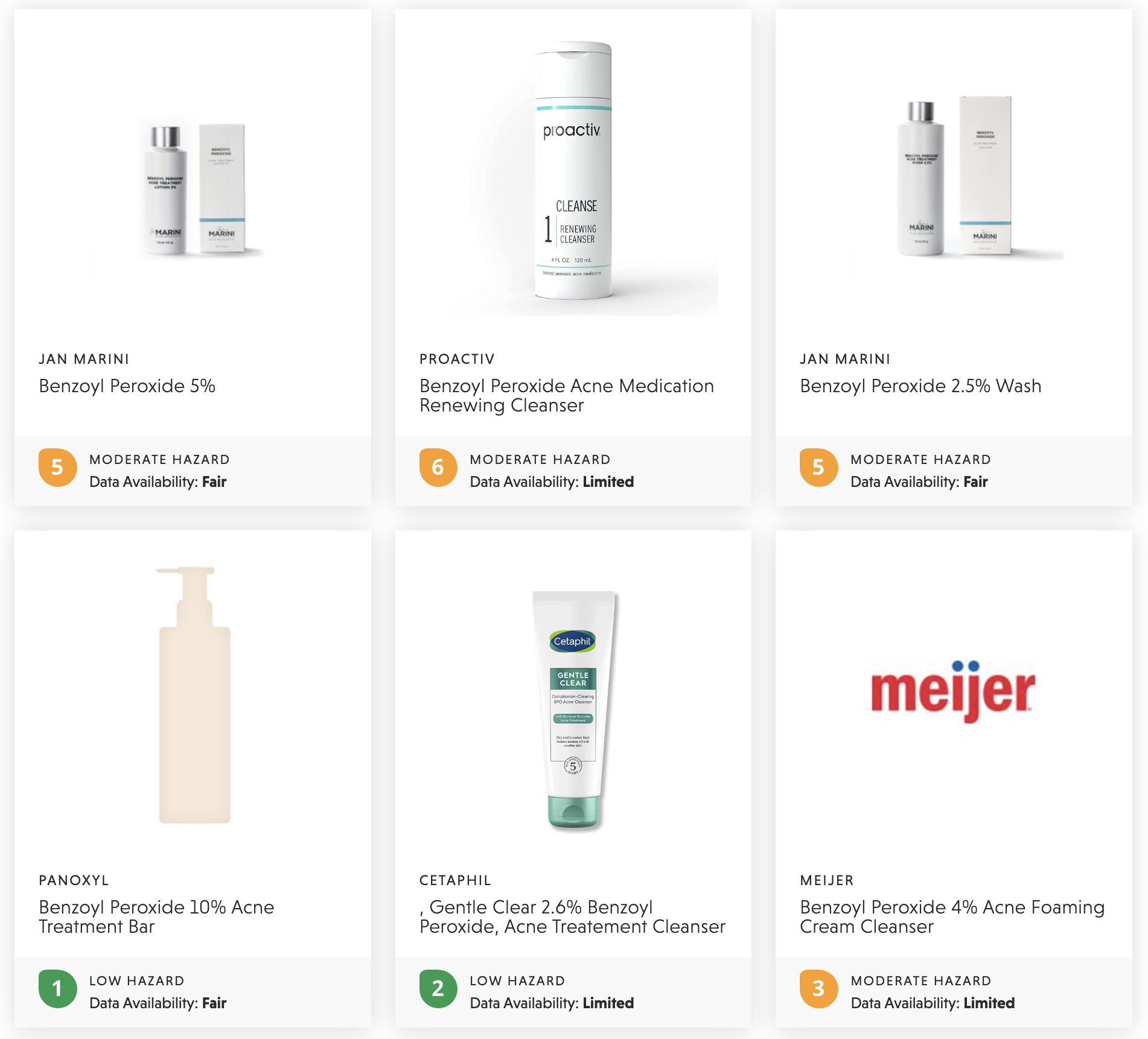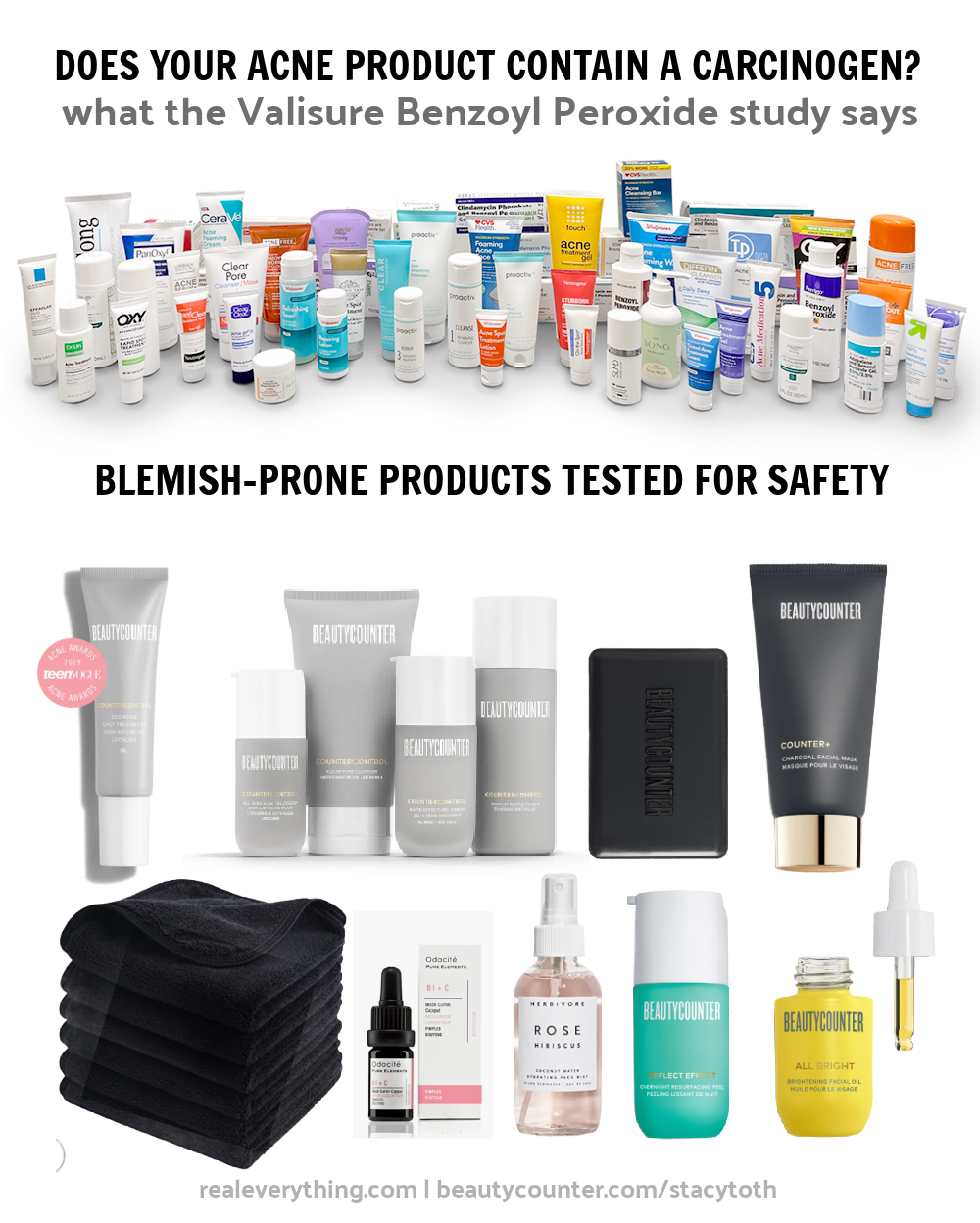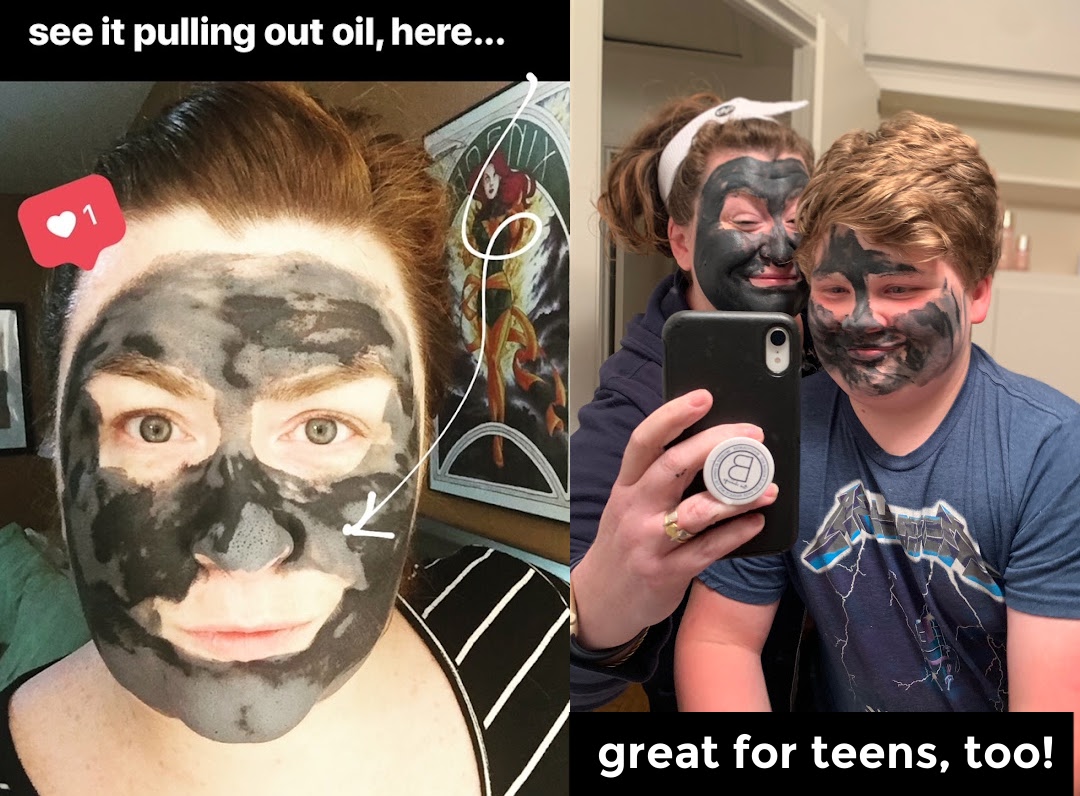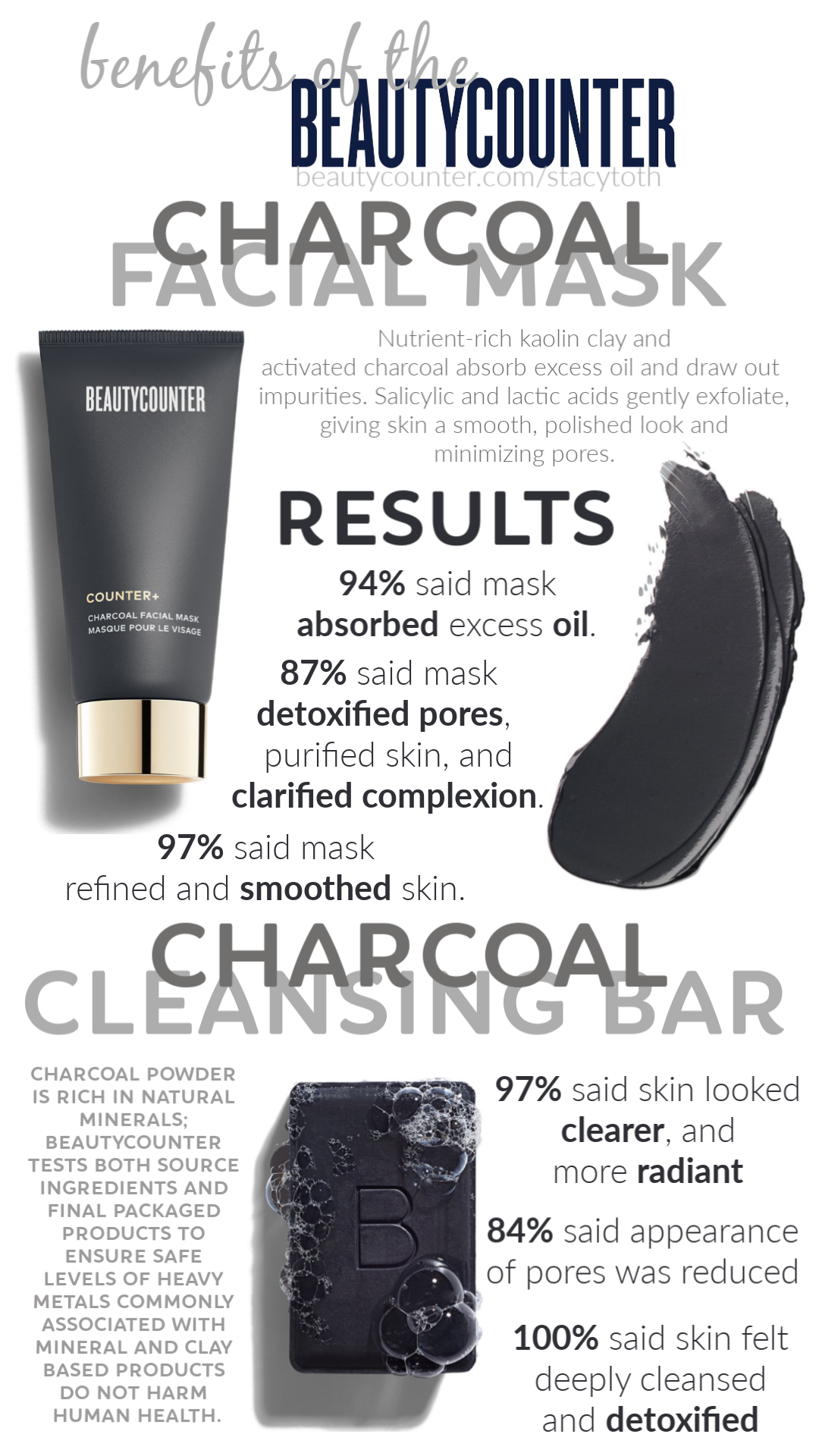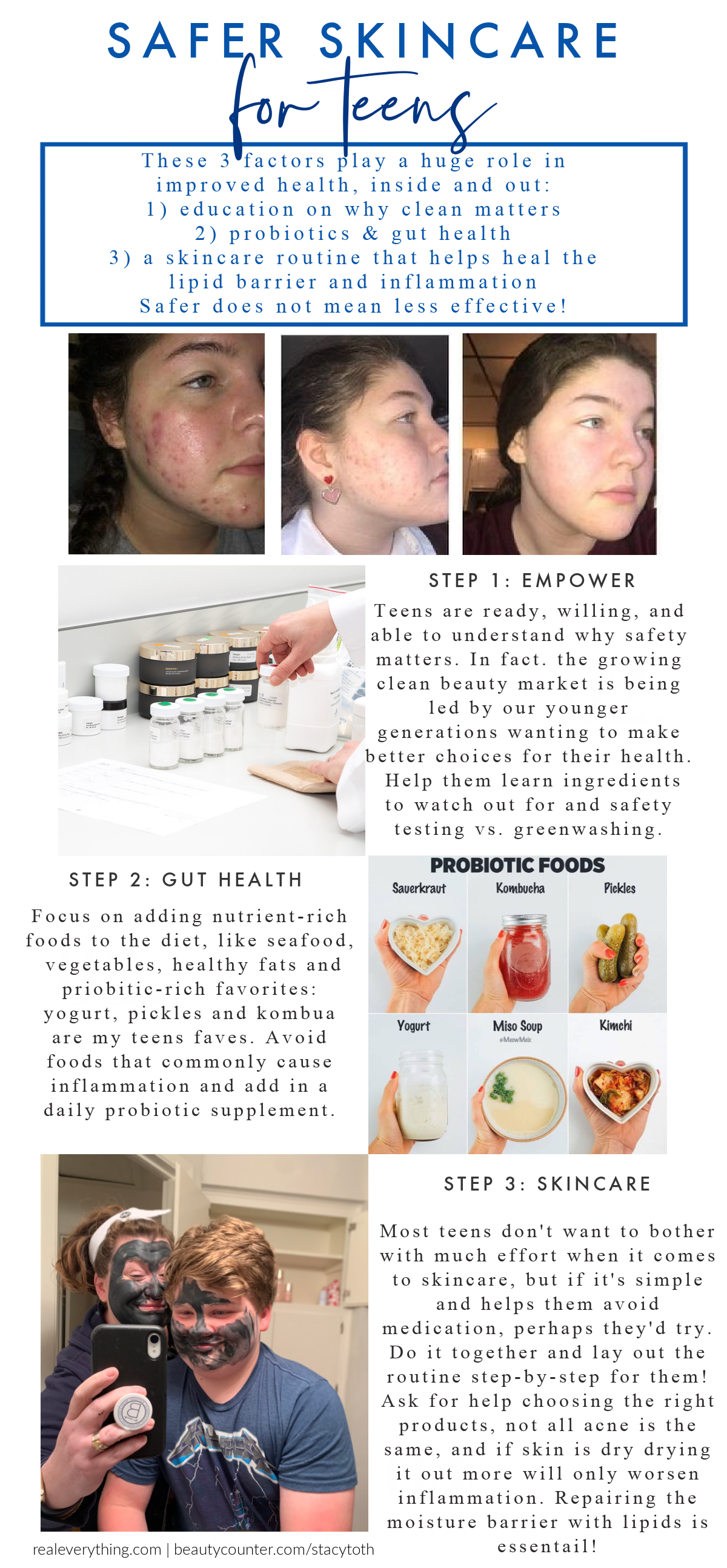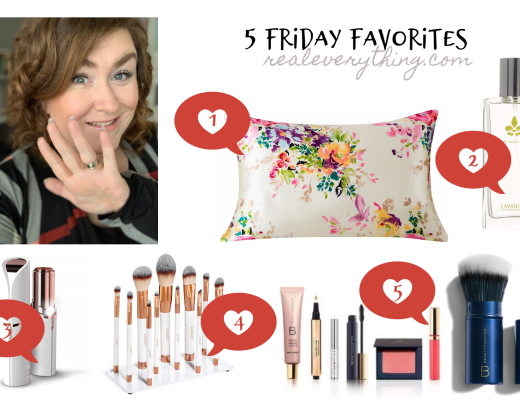You’ve seen the news: new study finds Benzene in Acne Products. Here’s what the study and science on benzoyl peroxide actually says.
Benzene in Acne Products
Valisure filed a petition to “recall and suspension of sale of products containing benzoyl peroxide. Given the drug’s propensity to form the known human carcinogen benzene.” But as a consumer, it’s important to understand what this means for you and the actual risk (or identifying fear mongering).
It’s 3 days later and the FDA has not yet issued a recall (9), which could be the first mandatory one through MoCRA (10). Let’s first visit the FDA and EPA’s history defining benzene’s risk, and what it is:
Benzene is a known carcinogen, toxicity in humans has been well established for over 120 years, any concentration greater than zero is not safe.
Benzene, a colorless or light-yellow liquid at room temperature. While it is commonly used as a solvent in chemical and pharmaceutical industries, trace amounts can be found in cigarette smoke, gasoline, glues, adhesives, cleaning products, and paint strippers. (3) Valisure has previously detected and submitted citizen petitions for identification of benzene contamination in many drug and consumer products in excess of this limit since 2021, including:
- hand sanitizer (March 24, 2021)
- sun care products (May 24, 2021)
- body spray products (November 3, 2021)
- additional hand sanitizers, sunscreens, anti-fungal sprays, antiperspirants, dry shampoos, and antiseptics (December 2023)
There is clear persistent prevalence in consumer product supply chains. FDA has issued guidance to reformulate drug products that contain a specific gelling agent ingredient, carbomer, that could be a substantial source of benzene in drug products such as hand sanitizers. However, this does not address all potential sources of benzene. Thus, this study provided in-depth analysis that showed it is an ingredient itself (benzoyl peroxide) which is changing chemical structure in formulation to create benzene in the products. (1)
Benzoyl Peroxide becomes Benzene
“Topical benzoyl peroxide (BPO) is a widely used acne treatment; however, its efficacy and safety have not been clearly evaluated.” (7)
Unlike some of the prior analyses where benzene was found in a specific ingredient (polymer) or contamination (from the factory), Benzoyl Peroxide (BPO) has been shown to actually be the source of the benzene itself.
Furthermore, it is important to note that the specific problem with benzene in benzoyl peroxide products does not appear to be a contamination issue from a specific ingredient, but instead the inherent instability of the benzoyl peroxide molecule that breaks down and forms benzene. (1)
In fact, this was known since 1993! From a prior study, “only formulations of BPO are unstable, while BPO alone is relatively stable: Even heating of BPO-phthalate mixtures at 50°C produced significant amounts of benzene, while no benzene production was detected when benzoyl peroxide was heated alone at this temperature.” And multiple studies since the 1980’s have shown chemical evidence of carcinogenicity using animal models. (1)
It acts like a formaldehyde-releaser, meaning it’s not part of any specific ingredients or even contaminants, but it’s a chemical reaction. (5)
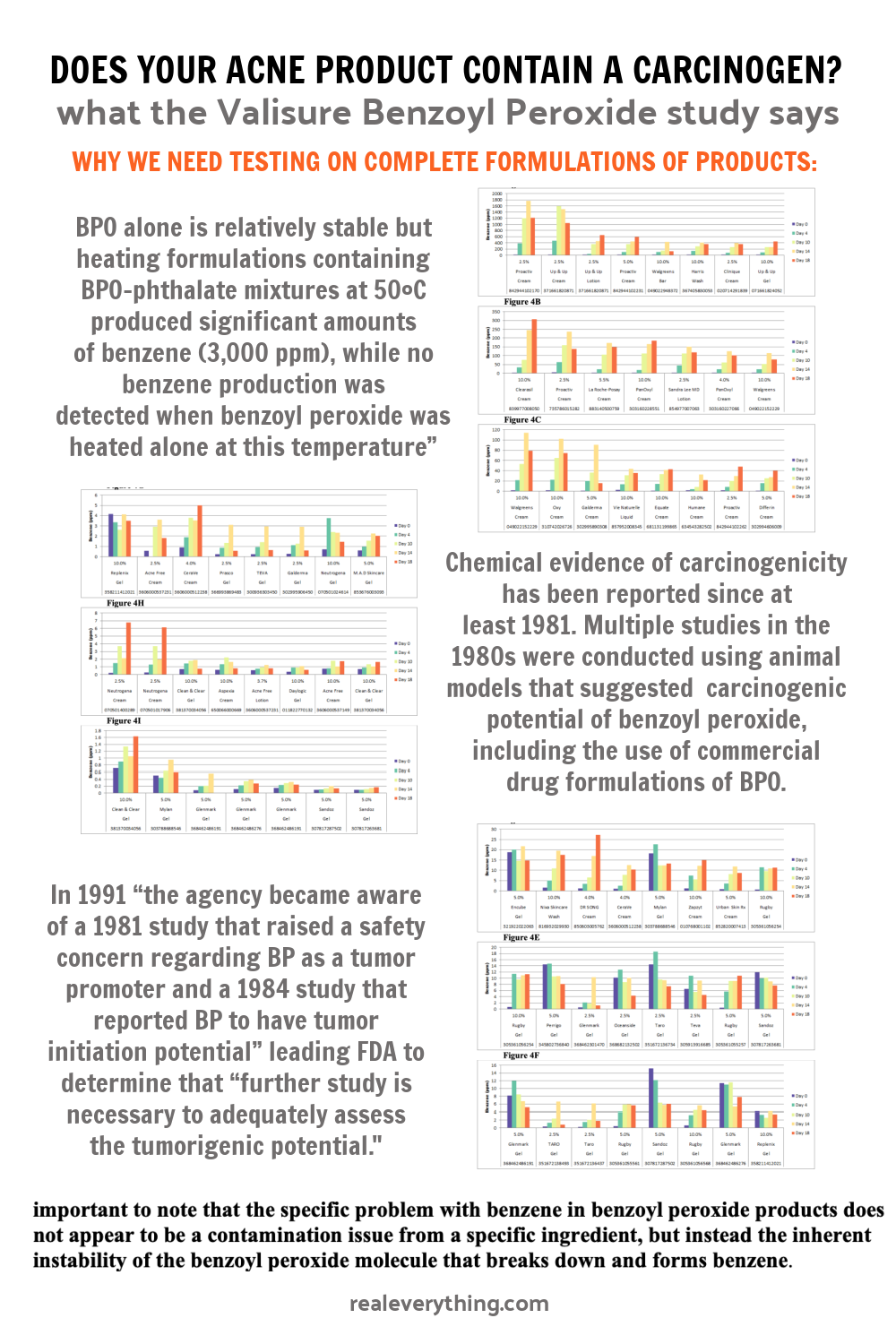
Exact Numbers
Valisure tested 66 BPO products, including creams, lotions, gels, and washes that are available over the counter from main retailers or in prescription form. Currently, FDA guidelines advise against but allow a maximum of 2 parts per million of benzene. Valisure found acne products that contain up to 12 times the allowed amount. Additionally, the parts per million of benzene significantly increased when the acne products were tested at higher temperatures that were designed to replicate how the products can break down over time.
Affected Products:
Proactiv 2.5% BPO cream
Up & Up 2.5% BPO cream
Walgreens 10% BPO bar
Harris 10% BPO wash
Clinique 2.5% BPO cream
Clearasil 10% BPO cream
La Roche-Posay 5.5% BPO cream
PanOxyl 10% BPO cream
Sandra Lee MD 2.5% BPO lotion
Oxy 10% BPO cream
Galderma 5% BPO cream
Equate 10% BPO cream
Differin 5% BPO cream
CeraVe 4% BPO cream
Sandoz 5% BPO gel
TARO 2.5% BPO gel
Neutrogena 10% BPO gel
and more
From its testing, Valisure found that Proactiv’s 2.5% BPO cream, manufactured by Taro Pharmaceuticals, contained 1761 parts per million of benzene. Target’s Up & Up 2.5% BPO cream had 1598 parts per million; Estee Lauder’s Clinique 2.5% BPO cream had 401 parts per million; Reckitt Benckiser Group’s Clearasil 10% BPO cream had 308 parts per million, and Walgreens 10% BPO cream had 114 parts per million, as some of the products with the highest parts per million (8)
Benzene Risk is Even Inside Packaging
Valisure observed evidence of risk that some acne treatment products may have packaging that is porous to benzene, enabling some portion of benzene contained in the product, or formed in the product during stability testing, to escape into the environment or air around the package. Then they tested this hypothesis at “temperatures the product may be exposed to during distribution and handling by consumers.” (1)
The results of the tests show that benzene can leak outside of unopened BPO containing acne treatment product at levels higher than the top of FDA and EPA limits.
The Bad News & Good News
It is clear that this is a true risk, even from FDA’s own further studies on the potential carcinogenicity of benzoyl peroxide and actions of the FDA Advisory Committee. “The Committee recommended, by a four-to-three vote (with one abstention), that the known safety data regarding the tumor promoting potential of benzoyl peroxide should be communicated to consumers.” Yet, “the Committee unanimously agreed that the word, ‘‘cancer’’ should not be included in the labeling of acne drug products containing benzoyl peroxide. The Committee was concerned that the word ‘‘cancer’’ would cause consumers to avoid using these products…” (1)
Yep, you read that right. FDA acknowledged the danger, but elected to not fully alert consumers for fear of the products remaining unsold. Whose interest are we really focused on?
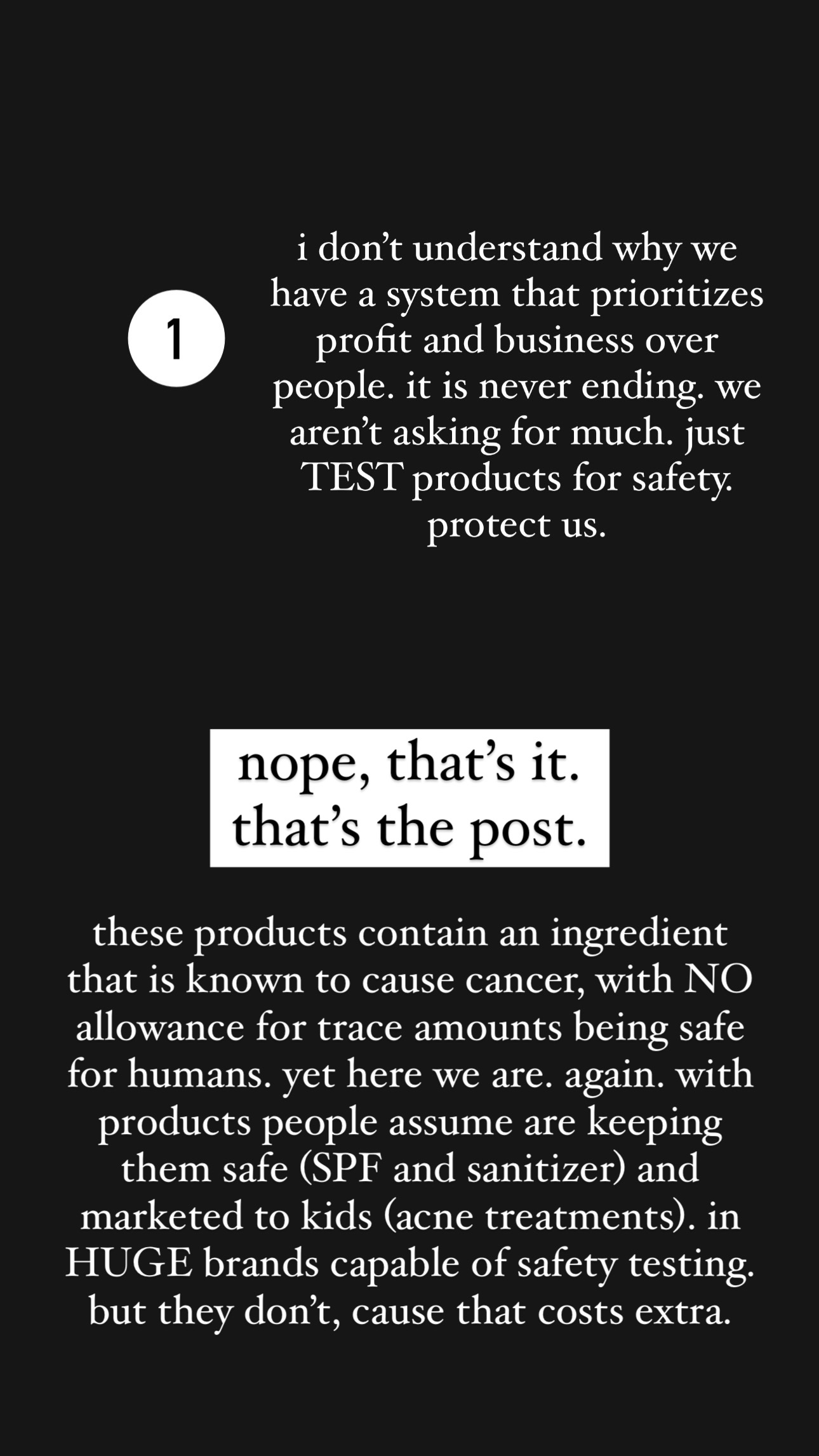
Yale is doing their own studies on BPO products
We will likely see more information on this as their results are published. But they provided a statement for the study:
[We] want to reiterate first and foremost that there is not a safe level of benzene that can exist in any skin care product, over the counter or prescription. Benzene is highly carcinogenic, and recently we’ve seen the U.S. Food and Drug Administration agree with this position this by taking action to ensure removal of carbomers contaminated with benzene from manufacturing processes. The current data on BPO degrading into high levels of benzene is extremely concerning given its prominent use in skin care, and this study should serve as another wake-up call for improved manufacturing and quality control of consumer healthcare products. (1)
The Good… maybe
If BPO is inherently stable as a pure, crystalline powder, then a reformulated product that focuses on substantially reducing or entirely preventing the degradation of BPO into benzene could potentially be developed. Antioxidants are often used to prevent or inhibit thermal degradation processes and Valisure investigated a few common antioxidants in a model system of therapeutically relevant 10% BPO in glycerol. Also, the results show that the addition of an antioxidant can substantially reduce the formation of benzene by over 98% in a formulation representative of a drug product. These and other techniques that could help address the BPO degradation problem in drug product formulations have been detailed in a recent patent filing. (1)
This ingredient is found in products on EWG rating from green 1 all the way to highest risk of red, but it is in the long-use review that carcinogenic formation was found. So, I prefer to shop with a brand that actually does that testing on their products proactively! (4)
Blemish & Acne-prone Products Tested for Safety
Beautycounter not only does not use Benzoyl Peroxide as an ingredient, but has banned the use of phthalates – known to harm human health, and shown here to further destabilize an ingredient to a carcinogen.
Beautycounter’s Countercontrol Regimen & Acne SOS Spot Treatment
- Beautycounter tests every single final batch of products against all contaminants, carcinogens and endocrine disruptors against 23 human health endpoints
- Treats breakouts without over-drying skin.
- Provides relief for when an unexpected blemish appears.
- Effectively removes oil, makeup, and residual impurities.
- Gently exfoliates with jojoba beads.
- Leaves skin feeling balanced.
- Helps to clear existing blemishes.
- Addresses the main causes of acne to prevent future breakouts.
- Keeps skin in balance.
Results (consumer study):
- Mattifies skin and wipes away excess oil
- Minimizes the look of pores
- Mattifies skin for up to eight hours
- Hydrates and balances skin
- 84% said blemish reduced in size
- 88% said blemishes looked less red
- 97% had less oily skin
- 84% said blemish size reduced in size
- 90% had healthier-looking skin and a more even texture
- 88% said blemishes looked less red
- 90% said skin felt softer and smoother
- 90% said the appearance of pores looked minimized
Safer Ingredients:
- SkinBalance Complex: All Countercontrol products, featuring our signature SkinBalance Complex with wintergreen and rosebay willow, help mattify skin, purify pores, and reduce the appearance of redness while keeping skin in balance.
- Salicylic Acid: Derived from wintergreen, helps exfoliate dead skin cells that can clog pores and lead to blemishes.
- Jojoba Beads: Provide gentle physical exfoliation to help remove dead skin cells.
- Aloe Vera: Helps soothe skin.
- Squalane: This olive-derived emollient, which is compatible with skin’s natural oils, soothes without feeling heavy or greasy.
- Witch Hazel: A powerful, naturally derived astringent that removes residual impurities and excess oil.
- Pro Vitamin B5 (Panthenol): Conditions skin with essential moisture.
- formulated with responsibly sourced palm
Shop:
- Whole Regimen (4 step proper skincare routine, 10% off as a bundle)
- Clear Pore Cleanser, my favorite of all the items and what myself and my teens use
- SOS Acne Spot Treatment, award-winning clear gel zaps zits while you sleep
Beautycounter’s Charcoal Facial Mask & Cleansing Bar
- Absorbs excess oil
- Visibly minimizes pores
- Purifies, detoxifies, and clarifies complexion
- Helps calm, refine, and smooth skin
Results (consumer study):
- 94% said mask absorbed excess oil
- 87% said mask detoxified pores, purified skin, and clarified complexion
- 97% said mask refined and smoothed skin
- 97% said skin looked clearer and more radiant with bar
- 84% said bar reduced appearance of pores
- 100% said skin felt deeply cleansed and detoxified with the bar
Safer Ingredients:
- Charcoal Powder: rich in natural minerals to help balance and purify
- Salicylic Acid and Lactic Acid: gently exfoliate and smooth skin’s surface
Shop:
Additional items I love for blemish-prone skin:
-
- All Bright Brightening Facial Oil, I explain why lipids help reduce acne (by fortifying the skin’s moisture barrier to keep bacteria out) more in this article and here.
- Reflect Effect Overnight Resurfacing Peel was also a game-changer for my blemish-prone skin, the gentle exfoliation literally transforms my skin overnight; especially ideal for those looking for anti-aging benefits and reduced blemishes
- Plush microfiber face cloths are the perfect level of exfoliation and softness to help clear pores, and won’t stain when you remove the charcoal mask!
- Herbivore’s Rose Hibiscus Coconut Water is a hydrating face mist that will reduce inflammation throughout the day and makes a great toner (2nd step of a 4 step proper skin routine).
- Odacite’s Acne Serum Concentrate is a tiny bottle, but the benefits of just a drop or two a day can help transform blemish-prone skin. I add this to my regular routine (using all of the above, too) when my skin gets a little hormonally weird and it fixes it right up.
Want personal recommendations?
Fill out my Skin Survey here
You can also read more here:
So never want to miss a post, sale, or deal? Join my Healthy Inside & Out e-mail list for more info on non-toxic living and safer skincare!
Want more info on our Real Life? Healthy recipes, parenting tips, and general lifestyle stuff goes out in our Real Everything newsletter, join here.
Sources
-
- Valisure Study, read here
- National Library of Medicine, Benzene NBK138708, read here
- Valisure Press Announcement, read here
- EWG’s Skin Deep Database here
- Formaldehyde may be found in cosmetic products even when unlabelled, PMC5152996, read here
- Highly Sensitive Detection of Benzoyl Peroxide Based on Organoboron Fluorescent Conjugated Polymers read here
- Topical benzoyl peroxide for acne, PMC7077870, read here
- Dermatology Times, Benzene Found in Various Acne Products; Valisure Files Petition With FDA to Recall Treatments read here
- FDA Cosmetics Recalls read here
- All About MoCRA read here

